沙格司亭Leukine(Sargramostim Injection Vials)
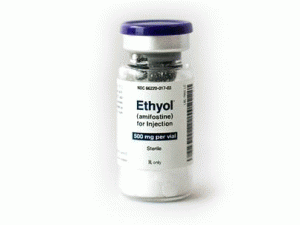 药店国别:
产地国家:美国
处方药:是
所属类别: 500微克/毫升/瓶 5瓶/盒
包装规格: 500微克/毫升/瓶 5瓶/盒
计价单位:盒
生产厂家中文参考译名:
生产厂家英文名:BERLEX LABS
原产地英文商品名:LEUKINE 500mcg/ml/Vial 5Vials/box
原产地英文药品名:SARGRAMOSTIM
中文参考商品译名:瘤肯 500微克/毫升/瓶 5瓶/盒
中文参考药品译名:沙格司亭
曾用名:
简介:部分中文瘤肯处方资料(仅供参考)瘤肯(沙格司亭)LEUKINE(SARGRAMOSTIM)英文药名: Leukine (Sargramostim Injection Vials)中文药名: 莫拉司亭注射剂,沙格司亭药品简介药物名称: 莫拉司亭, 沙格司亭别 名: 粒细胞-单核巨噬细胞集落刺激因子,生白能,先特能,沙格莫丁,生百能,重组人粒细胞巨噬细胞集落刺激因子、特尔立英 文 名: Molgramostim, Sargramostim药品说明:贮于2-8℃,避光,可稳定保存36个月。用无菌溶媒溶解后,2-8℃,可保存1周。静注稀释液,2-8℃可保存24hr。必要时,本药用溶媒溶解后冻存28天。可以冻融2次。
适应症:
骨髓抑制疗法所引起的白细胞减少症、骨髓衰竭病人的白细胞低下,也用于预防白细胞减少时可能潜在的感染并发症。
用法用量:
皮下注射或静脉滴注,剂量视病情而定,使白细胞计数维持在期望的水平(通常<10×109/L)。推荐剂量如下: 癌症化疗,5μg~10μg/kg,皮下注射,1次/日,于化疗停药1日后开始使用,持续使用7~10日。停药后至少间隔48h后方进行下一疗程的抗癌化疗。骨髓增生异常综合征(MDS)、再生障碍性贫血,3μg/kg,皮下注射1次/日,3~4日显效后调节剂量,使白细胞维持在<10×109/L。骨髓移植,5μg ~10μg/kg,静滴4~6h,1次/日,持续用药至中性粒细胞绝对计数≥10×109/L达3日之久。艾滋病(AIDS),1μg/kg,皮下注射,1次/日,如与叠氮胸苷(AZT)或AZT、(-干扰素合用,本品用量为每日1μg~3μg/kg;如与更昔洛韦合用,每日3μg ~5μg/kg,皮下注射,1次/日。2~4日见效后,每隔3~5日调整1次剂量。癌症化疗: 5-10 μg/kg体重,1次/日皮下注射。在化疗停止1日后使用,持续7-10天。骨髓移殖: 5 μg/kg体重/日,静脉点滴4-6hr,自骨髓移植后次日开始,持续使用不超过30天,或至连续3天中性粒细胞绝对值超过1 x 109/L。骨髓异常增生综合征/再生障碍性贫血: 3μg/kg体重,1次/日,一般需2-4日才能观察到白细胞增高的最初效应。以后应根据白细胞计数情况调节剂量。艾滋病: 单独使用1 μg/kg体重,1次/日,皮下注射。与AZT或AZT/α干扰素合用,1-3μg/kg体重,与甘昔洛韦合用3-5 μg/kg体重,1次/日,皮下注射。一般需2~4天才能观察到白细胞计数上升的最初效应。
注意事项:
妊娠C类。禁用于对本品或内在其他成分有过敏史的病人以及自身免疫性血小板减少性紫瘢的病人。首次使用本药应在医疗监护下进行。用药期间应注意监测血象。
对妊娠和哺乳的影响:孕期使用本药的安全性尚未建立。动物试验研究表明本药有生殖毒性。在灵长类动物模型中发现,剂量6-10μg/kg/日,可发生自发性流产。本药是否经乳汁分泌,尚不清楚。但由于对婴儿可能有不良作用,哺乳妇女在开始使用本药前应停止哺乳。
对儿童的影响: 本药对18岁以下病人的有效性和安全性尚未建立。
沙格司亭英文版说明书
Leukine®Posted on October 18th, 2010 by AdminClass: Supportive careGeneric Name: Sargramostim (sar-gram-OH-stim), GM-CSF, granulocyte-macrophage colony stimulating factorTrade Name: Leukine®How is this drug used? Sargramostim is FDA approved for increasing the number and function of white blood cell levels following chemotherapy for acute myelogenous leukemia in older patients, and after bone marrow transplant and autologous stem cell transplants using peripheral blood. Sargramostim is also FDA approved to stimulate the production of white blood cells prior to collection in a stem cell transplant. It is important for patients to remember that physicians have the ability to prescribe medication for conditions other than those for which the drug has been approved by the FDA. Patients who have received a prescription of this drug for a condition other than which it is approved may wish to discuss this issue with their physician.What is the mechanism of action? Sargramostim is classified as a biologic response modifier. It is a man-made form of a protein, called a growth factor, that helps to increase the number and function of white blood cells. Sargramostim stimulates the body to produce white blood cells.How is sargramostim given (administered)? Sargramostim is administered either as an injection under the skin (subcutaneous), or into a vein (intravenous), and the dose depends on several factors, including the condition being treated, the size of the patient, the particular regimen being used, and the overall health of the patient.How are patients monitored? Patients will usually have scheduled meetings with their healthcare provider while they are being treated with sargramostim. Typically, blood will be drawn to check levels of blood cells and to monitor functions of some organ systems, such as the kidneys or liver. Patients may also undergo physical examinations, scans or other measures to assess side effects and response to therapy. Levels of white blood cells are of particular importance in patients receiving sargramostim.Patients will also be monitored for reactions that occur either during infusion or following infusion of sargramostim that include difficulty in breathing, wheezing, fainting, hives, increased heart rate, low blood pressure, and reddening of the face or neck. Patients experiencing these symptoms should tell their healthcare provider immediately.Patients are also monitored for an uncommon (less than 1%) condition called capillary leak syndrome, in which fluid “leaks” from the veins and capillaries into surrounding tissues. This results in low fluid and blood volume to organs. Patients experiencing dizziness, sudden or extreme weight gain, difficulty breathing, little or no urine output or chest pain should notify their healthcare provider immediately.In addition, patients may have their heart function monitored, as heart rhythm may be affected by sargramostim. Patients will also be monitored for blood clots. If patients experience redness, swelling or pain in one extremity and not the other, sudden difficulty or pain in breathing, a sudden and severe headache or visual changes should contact their healthcare provider immediately.What are the most common side effects of treatment with sargramostim?• A “first dose effect” may occur, which is characterized by an increased heart rate, feeling faint, low blood pressure and reddening of the face. This tends to only happen on the first dose of sargramostim• Diarrhea or stomach upset• Swelling, pain, redness, tenderness at the site of injection• Flu-like symptoms that may include fever, headache, achiness or pain, weakness and fatigue• Bone pain• Swelling of feet or handsThis is not a complete list of side effects. Some patients may experience other side effects that are not listed here. Patients may wish to discuss with their physician the other less common side effects of this drug, some of which may be serious.Some side effects may require medical attention. Other side effects do not require medical attention and may go away during treatment. Patients should check with their physician about any side effects that continue or are bothersome.What can patients do to help alleviate or prevent discomfort and side effects?• Pay careful attention to the physician’s instructions and inform the physician of any side effects.• Maintain adequate rest and nutrition.• Wear sunscreen and protective clothing and try to minimize sun exposure.• Drink plenty of fluids. (Patients should ask their physician about the amount of liquid to consume during a day.)• Patients being treated with sargramostim are often at risk of developing an infection from low immune cell levels caused by their treatment. Staying away from large crowds or other people that are not feeling well will reduce the risk of infection.• Wash hands well to reduce the risk of infection.• Rotate sites on the body where sargramostim is injected.• Do not rub skin before or after injection.• Ice applied to the site of injection prior to administration may help alleviate pain.Are there any special precautions patients should be aware of before starting treatment?• Patients should inform their physician if they are pregnant, breastfeeding or planning a family in the near future. This drug may cause birth defects. It is important to use some kind of birth control while undergoing treatment. Also, patients may want to talk to their physician if they are considering having children in the future, since some drugs may cause fertility problems.• It is important that patients inform their physician of any pre-existing conditions (chicken pox, heart disease, kidney disease, liver disease, lung disease, etc.) as they may worsen with this drug.• Patients should inform their physician of any other medication they are taking (whether prescription or over-the-counter, including vitamins, herbs, etc.) as they may interfere with treatment.• Patients should check with their physician before starting any new drug or nutritional supplement.• Patients should inform their physician of any known drug or food allergies or any reactions to medications they have experienced in the past.• Sargramostim may enhance complications associated with the following pre-existing conditions: edema, pleura or pericardial infusion or capillary leak syndromeWhen should patients notify their physician?• Signs of an allergic reaction – difficulty breathing, chest pain, hives, fainting, increased heart rate or reddening of the face or neck, skin rash, hives• Signs of capillary leak syndrome - dizziness, sudden or extreme weight gain, difficulty breathing, chest pain, little or no urine output or chest pain• Chest pain, rapid or irregular pulse• Fever• Signs of infection – redness, swelling, pus• Cold or flu-like symptoms – cough, sore throat, fever, chills, runny nose, achiness• Signs of a blood clot – swelling, redness or pain of one extremity and not the other, sudden difficulty or pain in breathing, sudden and severe headache and/or visual disturbances• Severe bone painWhat is a package insert?A package insert is required by the FDA and contains a summary of the essential scientific information needed for the safe and effective use of the drug for healthcare providers and consumers. A package insert typically includes information regarding specific indications, administration schedules, dosing, side effects, contraindications, results from some clinical trials, chemical structure, pharmacokinetics and metabolism of the specific drug. By carefully reviewing the package insert, you will get the most complete and current information about how to safely use this drug. If you do not have the package insert for the drug you are using, your pharmacist or physician may be able to provide you with a copy.
药店国别:
产地国家:美国
处方药:是
所属类别: 500微克/毫升/瓶 5瓶/盒
包装规格: 500微克/毫升/瓶 5瓶/盒
计价单位:盒
生产厂家中文参考译名:
生产厂家英文名:BERLEX LABS
原产地英文商品名:LEUKINE 500mcg/ml/Vial 5Vials/box
原产地英文药品名:SARGRAMOSTIM
中文参考商品译名:瘤肯 500微克/毫升/瓶 5瓶/盒
中文参考药品译名:沙格司亭
曾用名:
简介:部分中文瘤肯处方资料(仅供参考)瘤肯(沙格司亭)LEUKINE(SARGRAMOSTIM)英文药名: Leukine (Sargramostim Injection Vials)中文药名: 莫拉司亭注射剂,沙格司亭药品简介药物名称: 莫拉司亭, 沙格司亭别 名: 粒细胞-单核巨噬细胞集落刺激因子,生白能,先特能,沙格莫丁,生百能,重组人粒细胞巨噬细胞集落刺激因子、特尔立英 文 名: Molgramostim, Sargramostim药品说明:贮于2-8℃,避光,可稳定保存36个月。用无菌溶媒溶解后,2-8℃,可保存1周。静注稀释液,2-8℃可保存24hr。必要时,本药用溶媒溶解后冻存28天。可以冻融2次。
适应症:
骨髓抑制疗法所引起的白细胞减少症、骨髓衰竭病人的白细胞低下,也用于预防白细胞减少时可能潜在的感染并发症。
用法用量:
皮下注射或静脉滴注,剂量视病情而定,使白细胞计数维持在期望的水平(通常<10×109/L)。推荐剂量如下: 癌症化疗,5μg~10μg/kg,皮下注射,1次/日,于化疗停药1日后开始使用,持续使用7~10日。停药后至少间隔48h后方进行下一疗程的抗癌化疗。骨髓增生异常综合征(MDS)、再生障碍性贫血,3μg/kg,皮下注射1次/日,3~4日显效后调节剂量,使白细胞维持在<10×109/L。骨髓移植,5μg ~10μg/kg,静滴4~6h,1次/日,持续用药至中性粒细胞绝对计数≥10×109/L达3日之久。艾滋病(AIDS),1μg/kg,皮下注射,1次/日,如与叠氮胸苷(AZT)或AZT、(-干扰素合用,本品用量为每日1μg~3μg/kg;如与更昔洛韦合用,每日3μg ~5μg/kg,皮下注射,1次/日。2~4日见效后,每隔3~5日调整1次剂量。癌症化疗: 5-10 μg/kg体重,1次/日皮下注射。在化疗停止1日后使用,持续7-10天。骨髓移殖: 5 μg/kg体重/日,静脉点滴4-6hr,自骨髓移植后次日开始,持续使用不超过30天,或至连续3天中性粒细胞绝对值超过1 x 109/L。骨髓异常增生综合征/再生障碍性贫血: 3μg/kg体重,1次/日,一般需2-4日才能观察到白细胞增高的最初效应。以后应根据白细胞计数情况调节剂量。艾滋病: 单独使用1 μg/kg体重,1次/日,皮下注射。与AZT或AZT/α干扰素合用,1-3μg/kg体重,与甘昔洛韦合用3-5 μg/kg体重,1次/日,皮下注射。一般需2~4天才能观察到白细胞计数上升的最初效应。
注意事项:
妊娠C类。禁用于对本品或内在其他成分有过敏史的病人以及自身免疫性血小板减少性紫瘢的病人。首次使用本药应在医疗监护下进行。用药期间应注意监测血象。
对妊娠和哺乳的影响:孕期使用本药的安全性尚未建立。动物试验研究表明本药有生殖毒性。在灵长类动物模型中发现,剂量6-10μg/kg/日,可发生自发性流产。本药是否经乳汁分泌,尚不清楚。但由于对婴儿可能有不良作用,哺乳妇女在开始使用本药前应停止哺乳。
对儿童的影响: 本药对18岁以下病人的有效性和安全性尚未建立。
沙格司亭英文版说明书
Leukine®Posted on October 18th, 2010 by AdminClass: Supportive careGeneric Name: Sargramostim (sar-gram-OH-stim), GM-CSF, granulocyte-macrophage colony stimulating factorTrade Name: Leukine®How is this drug used? Sargramostim is FDA approved for increasing the number and function of white blood cell levels following chemotherapy for acute myelogenous leukemia in older patients, and after bone marrow transplant and autologous stem cell transplants using peripheral blood. Sargramostim is also FDA approved to stimulate the production of white blood cells prior to collection in a stem cell transplant. It is important for patients to remember that physicians have the ability to prescribe medication for conditions other than those for which the drug has been approved by the FDA. Patients who have received a prescription of this drug for a condition other than which it is approved may wish to discuss this issue with their physician.What is the mechanism of action? Sargramostim is classified as a biologic response modifier. It is a man-made form of a protein, called a growth factor, that helps to increase the number and function of white blood cells. Sargramostim stimulates the body to produce white blood cells.How is sargramostim given (administered)? Sargramostim is administered either as an injection under the skin (subcutaneous), or into a vein (intravenous), and the dose depends on several factors, including the condition being treated, the size of the patient, the particular regimen being used, and the overall health of the patient.How are patients monitored? Patients will usually have scheduled meetings with their healthcare provider while they are being treated with sargramostim. Typically, blood will be drawn to check levels of blood cells and to monitor functions of some organ systems, such as the kidneys or liver. Patients may also undergo physical examinations, scans or other measures to assess side effects and response to therapy. Levels of white blood cells are of particular importance in patients receiving sargramostim.Patients will also be monitored for reactions that occur either during infusion or following infusion of sargramostim that include difficulty in breathing, wheezing, fainting, hives, increased heart rate, low blood pressure, and reddening of the face or neck. Patients experiencing these symptoms should tell their healthcare provider immediately.Patients are also monitored for an uncommon (less than 1%) condition called capillary leak syndrome, in which fluid “leaks” from the veins and capillaries into surrounding tissues. This results in low fluid and blood volume to organs. Patients experiencing dizziness, sudden or extreme weight gain, difficulty breathing, little or no urine output or chest pain should notify their healthcare provider immediately.In addition, patients may have their heart function monitored, as heart rhythm may be affected by sargramostim. Patients will also be monitored for blood clots. If patients experience redness, swelling or pain in one extremity and not the other, sudden difficulty or pain in breathing, a sudden and severe headache or visual changes should contact their healthcare provider immediately.What are the most common side effects of treatment with sargramostim?• A “first dose effect” may occur, which is characterized by an increased heart rate, feeling faint, low blood pressure and reddening of the face. This tends to only happen on the first dose of sargramostim• Diarrhea or stomach upset• Swelling, pain, redness, tenderness at the site of injection• Flu-like symptoms that may include fever, headache, achiness or pain, weakness and fatigue• Bone pain• Swelling of feet or handsThis is not a complete list of side effects. Some patients may experience other side effects that are not listed here. Patients may wish to discuss with their physician the other less common side effects of this drug, some of which may be serious.Some side effects may require medical attention. Other side effects do not require medical attention and may go away during treatment. Patients should check with their physician about any side effects that continue or are bothersome.What can patients do to help alleviate or prevent discomfort and side effects?• Pay careful attention to the physician’s instructions and inform the physician of any side effects.• Maintain adequate rest and nutrition.• Wear sunscreen and protective clothing and try to minimize sun exposure.• Drink plenty of fluids. (Patients should ask their physician about the amount of liquid to consume during a day.)• Patients being treated with sargramostim are often at risk of developing an infection from low immune cell levels caused by their treatment. Staying away from large crowds or other people that are not feeling well will reduce the risk of infection.• Wash hands well to reduce the risk of infection.• Rotate sites on the body where sargramostim is injected.• Do not rub skin before or after injection.• Ice applied to the site of injection prior to administration may help alleviate pain.Are there any special precautions patients should be aware of before starting treatment?• Patients should inform their physician if they are pregnant, breastfeeding or planning a family in the near future. This drug may cause birth defects. It is important to use some kind of birth control while undergoing treatment. Also, patients may want to talk to their physician if they are considering having children in the future, since some drugs may cause fertility problems.• It is important that patients inform their physician of any pre-existing conditions (chicken pox, heart disease, kidney disease, liver disease, lung disease, etc.) as they may worsen with this drug.• Patients should inform their physician of any other medication they are taking (whether prescription or over-the-counter, including vitamins, herbs, etc.) as they may interfere with treatment.• Patients should check with their physician before starting any new drug or nutritional supplement.• Patients should inform their physician of any known drug or food allergies or any reactions to medications they have experienced in the past.• Sargramostim may enhance complications associated with the following pre-existing conditions: edema, pleura or pericardial infusion or capillary leak syndromeWhen should patients notify their physician?• Signs of an allergic reaction – difficulty breathing, chest pain, hives, fainting, increased heart rate or reddening of the face or neck, skin rash, hives• Signs of capillary leak syndrome - dizziness, sudden or extreme weight gain, difficulty breathing, chest pain, little or no urine output or chest pain• Chest pain, rapid or irregular pulse• Fever• Signs of infection – redness, swelling, pus• Cold or flu-like symptoms – cough, sore throat, fever, chills, runny nose, achiness• Signs of a blood clot – swelling, redness or pain of one extremity and not the other, sudden difficulty or pain in breathing, sudden and severe headache and/or visual disturbances• Severe bone painWhat is a package insert?A package insert is required by the FDA and contains a summary of the essential scientific information needed for the safe and effective use of the drug for healthcare providers and consumers. A package insert typically includes information regarding specific indications, administration schedules, dosing, side effects, contraindications, results from some clinical trials, chemical structure, pharmacokinetics and metabolism of the specific drug. By carefully reviewing the package insert, you will get the most complete and current information about how to safely use this drug. If you do not have the package insert for the drug you are using, your pharmacist or physician may be able to provide you with a copy.
用药温馨提示:当您服用此药物时,需定期接受医疗专业人士的检查,以便随时针对其药效、副作用等情况进行监测。本网站所包含的信息旨在为患者提供帮助,不能代替医学建议和治疗。
药品价格查询,专业药品查询网站,药品说明书查询,药品比价 » 沙格司亭Leukine(Sargramostim Injection Vials)
药品价格查询,专业药品查询网站,药品说明书查询,药品比价 » 沙格司亭Leukine(Sargramostim Injection Vials)



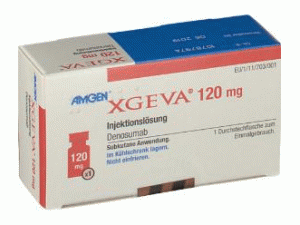
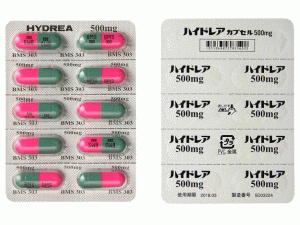
![环磷酰胺原末[口服散装粉]Cyclophosphamide Hydrate (Endoxan)](https://www.yschn.com/wp-content/uploads/2020/05/1592552449-6c48e6587d5611c.gif)
](https://www.yschn.com/wp-content/uploads/2020/05/1592386948-b1ae0f678a71eb0.gif)
](https://www.yschn.com/wp-content/uploads/2020/05/1592386998-169818b317f5e34.gif)
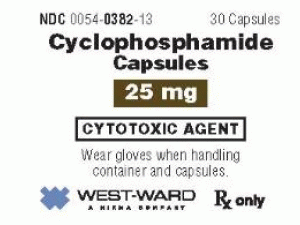
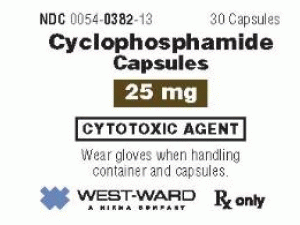
](https://www.yschn.com/wp-content/uploads/2020/05/1592384759-d2751eed473f2ab.gif)
